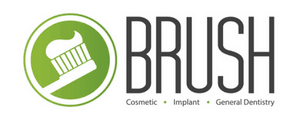The Common Dental Emergencies and How to Address Them
As a general rule, dental emergencies should never be taken lightly, as they can cause severe infections and problems if left untreated. While most dental emergencies are not life-threatening, the pain accompanying them can be unbearable and require immediate medical attention.
This blog will discuss some of the most common types of dental emergencies and how they can be addressed with proper care and vigilance.
1. Broken or Chipped Teeth
In most cases, the goal of treatment is to restore the tooth to its original shape and appearance. Treatment usually involves the removal of the decayed portion of the tooth, if necessary. Bonding may also be used to fill in gaps and restore the shape and appearance of the tooth.
If a large portion of the tooth is chipped off, a crown may be necessary to protect it from further damage and cover the exposed root. A root canal may sometimes be required if the nerve inside the tooth has been damaged.
2. Fall-Out Tooth
Knock-out tooth is a typical dental emergency that affects adults and children alike. It can be caused by an accident or facial trauma, like falling or being hit in the mouth. Sometimes, it may be due to tooth decay or gum disease.
Knock-out teeth must be addressed promptly to preserve the health of surrounding teeth, gums, and bones. Treatment may include replanting the knocked-out tooth, dental implants, or even bridges and crowns.
3. Loose Dental Implant
If the issue is not too severe, your dentist may be able to adjust the implant by tightening the screws and reinforcing it with dental cement. This should restore the implant’s strength and prevent it from coming loose again.
If the implant is too damaged to be repaired, your dentist may need to obliterate it. Depending on the situation, they may also suggest replacing it with a new one or performing a bone graft to help strengthen the area around the implant.
4. Lost Crown Filling
While it is always best to contact your dentist immediately, there are ways to temporarily address the problem until you can get to the dentist for treatment.
If you have lost your filling due to decay or trauma, taking action as soon as possible is essential to avoid further damage or infection. Clean the area around the missing filling with warm water and gently use a toothbrush to remove any plaque or debris.
This will also help to minimize sensitivity and pain. Then, schedule an appointment with the dentist to apply proper treatment.
5. Bleeding Gums
It may result from poor oral hygiene, gingivitis, periodontal disease, systemic diseases, or vitamin deficiency. Whatever the cause, it is essential to address bleeding gums immediately to prevent further complications.
The first step in addressing bleeding gums is to visit your dentist. While at-home treatments may help to stop the bleeding temporarily, they won’t be able to identify the root cause of your problem. A professional examination will help determine the underlying issue so you can receive the most effective treatment.
Conclusion
Dental emergencies can be daunting and painful, so knowing the different troubles and what you should do when one arises is essential. Most dental emergencies can be addressed quickly and effectively with proper care and vigilance.
If you are in a dental emergency and need the best dentist in Seattle, Washington, Brush Dental is here for you! Trust us to handle your dental emergency with professionalism and compassion. Contact us today to schedule an appointment!







